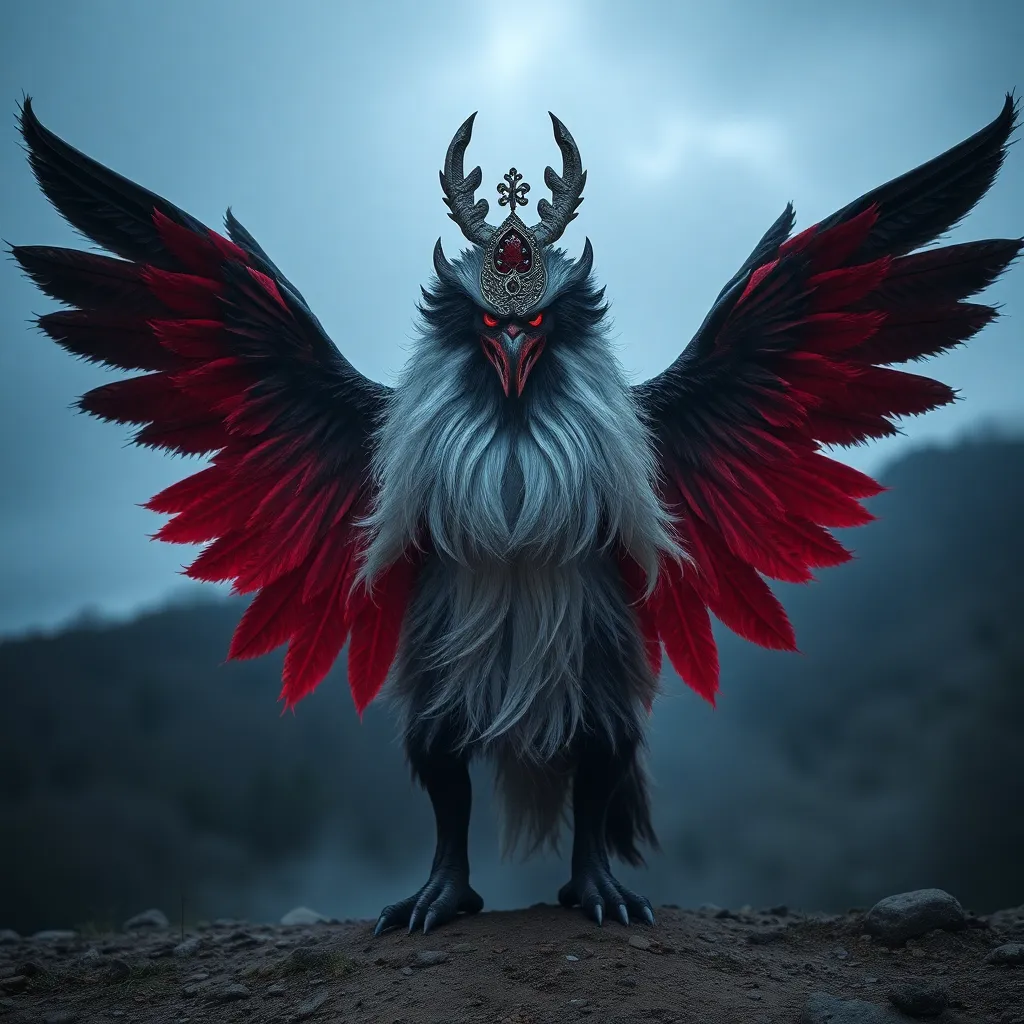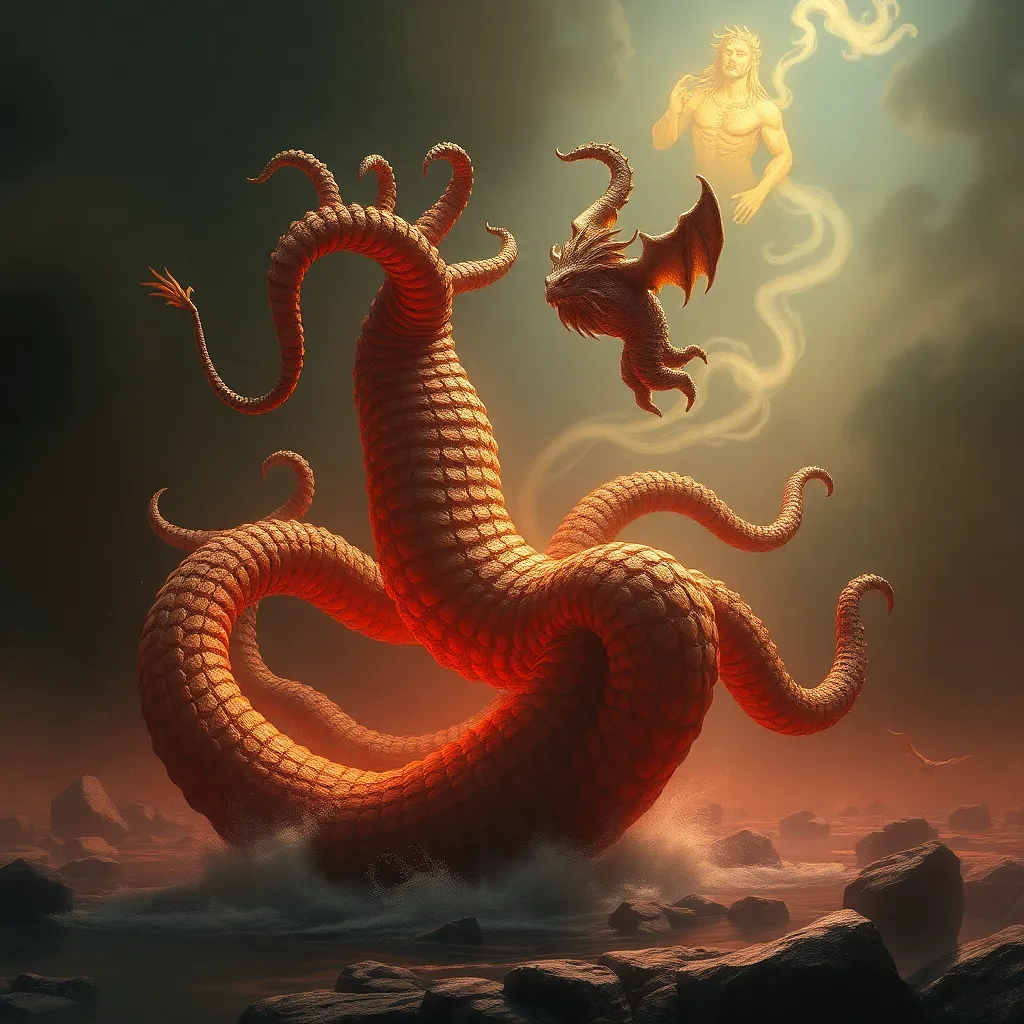The Tengu in Korean Folklore: Tracing Their Influence and Transformation
I. Introduction
The Tengu, a mythical creature rooted in Asian mythology, particularly in Japan, has transcended cultural boundaries to find a place in Korean folklore. These enigmatic beings, often depicted as hybrid creatures with human and bird-like features, embody various symbolic meanings, ranging from protectors to tricksters.
In Korean folklore, Tengu hold significant importance, representing the complexities of human nature and the interplay between the mundane and the supernatural. This article aims to explore the historical origins, characteristics, roles, and cultural legacy of Tengu in Korean traditions, shedding light on their evolution and transformation over time.
II. Historical Origins of Tengu in East Asian Culture
Tengu’s roots can be traced back to Japanese folklore, where they were initially portrayed as powerful mountain-dwelling spirits. Over time, their characteristics evolved, influenced by Buddhism and Shinto beliefs. The introduction of Tengu to Korean culture likely occurred through cultural exchanges, including trade and the spread of Buddhist texts.
In Korea, early representations of Tengu appeared in various texts and oral traditions. They were often depicted as mischievous beings with the ability to shape-shift. This introduction marked the beginning of a unique interpretation of Tengu within Korean cultural contexts.
III. Characteristics and Depictions of Tengu in Korean Folklore
The physical attributes of Tengu in Korean folklore often mirror their Japanese counterparts, featuring a blend of human and avian characteristics. They are commonly depicted with:
- Long noses, symbolizing wisdom and cunning.
- Feathered elements, emphasizing their connection to the natural and spiritual realms.
- Human-like forms, allowing them to interact with people.
Behaviorally, Tengu are known for their trickster qualities. They possess the ability to deceive and challenge human characters, often leading to moral lessons within the narratives. Unlike their Japanese representations, which can be more malevolent, Korean Tengu are generally seen as playful, albeit mischievous.
In comparison to Tengu in Chinese contexts, where they are often associated with Buddhist guardians, Korean Tengu embody a blend of spiritual and earthly traits, reinforcing their role as intermediaries between humans and the divine.
IV. The Role of Tengu in Korean Mythology and Folktales
Tengu frequently appear in Korean folktales, serving as pivotal characters in various narratives. Common themes include:
- Encounters between humans and Tengu that lead to unexpected outcomes.
- Lessons on humility, respect for nature, and the consequences of greed.
- The importance of wisdom in navigating challenges posed by Tengu.
These stories often highlight Tengu as tricksters, using their cunning to outsmart humans while imparting important moral lessons. The impact of Tengu on human characters serves as a reminder of the balance between human ambition and the respect for nature and the spiritual world.
V. Tengu in Korean Shamanism and Spiritual Practices
Tengu are intricately woven into the fabric of Korean shamanism. They are often invoked in rituals, symbolizing protection and guidance. The association of Tengu with shamanistic practices includes:
- Rituals that seek Tengu’s favor for protection against malevolent spirits.
- Use of Tengu imagery in talismans and offerings during spiritual ceremonies.
- Beliefs that Tengu can act as messengers between humans and the spirits.
In local customs, Tengu influence can be observed during community festivals and celebrations, where their stories are recounted, fostering a sense of cultural identity and continuity.
VI. Transformation of Tengu Over Time
The portrayal of Tengu has undergone significant changes throughout Korean history. In ancient times, they were predominantly viewed as protectors of the mountains and nature. However, with the advent of Confucianism and modernization, their image began to shift.
Modern interpretations of Tengu in contemporary culture reflect a blend of traditional beliefs and modern aesthetics. This includes:
- Incorporation of Tengu in popular media, such as films, literature, and art.
- Adaptations that often emphasize their trickster aspects while exploring deeper philosophical themes.
- The influence of globalization, introducing new narratives and interpretations of Tengu.
VII. The Cultural Legacy of Tengu in Modern Korea
Tengu continue to resonate within modern Korean culture, appearing in various forms of media. Their presence in:
- Literature, where they are often central to fantasy narratives.
- Film and television, showcasing their mythological roots while appealing to contemporary audiences.
- Art, where Tengu are depicted in traditional and modern styles, celebrating their rich folklore.
Additionally, Tengu-themed festivals and community events have emerged, promoting cultural heritage and awareness. These celebrations not only honor traditional narratives but also foster a revival of interest in folklore among younger generations.
VIII. Conclusion
In summary, Tengu hold a significant place in Korean folklore, embodying the complexities of human nature and the interplay between the physical and spiritual realms. Their evolution from ancient protectors to modern tricksters illustrates the dynamic nature of cultural narratives.
The preservation of these stories and beliefs is crucial for maintaining cultural identity and fostering an understanding of heritage. As Tengu continue to captivate imaginations in contemporary society, their relevance endures, reminding us of the rich tapestry of folklore that shapes our understanding of the world.




